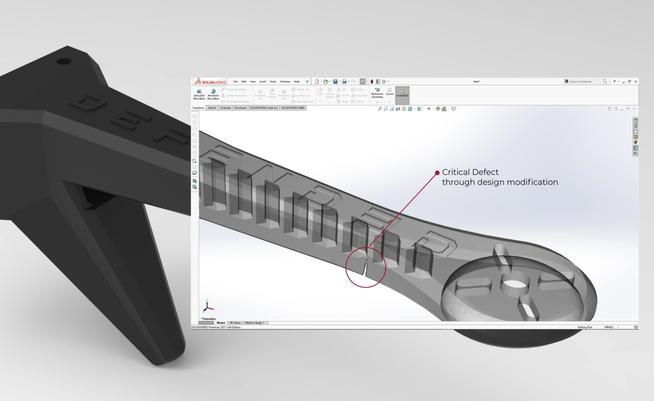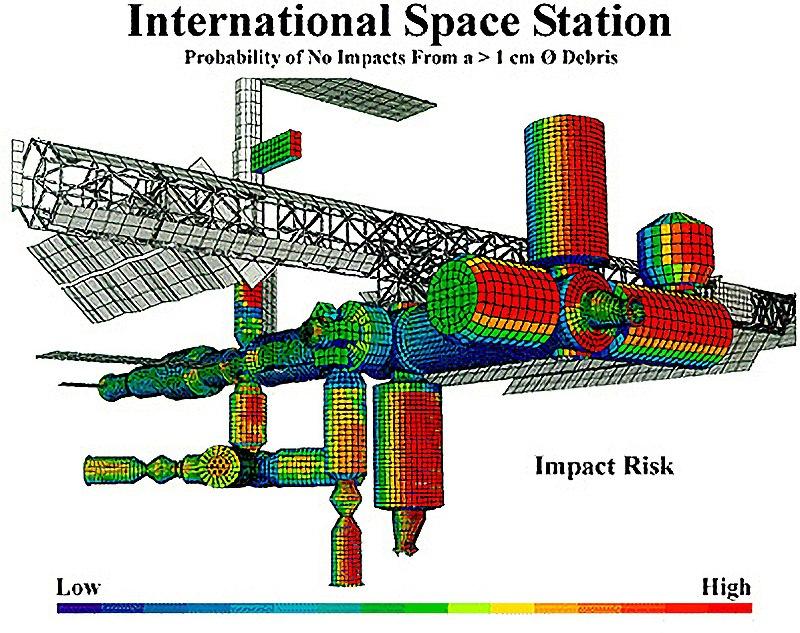
MARSHA by AI SpaceFactory: a proposal for a habitat on the surface of Mars built autonomously using local and mission-generated materials.
A shift towards space manufacturing seems inevitable, but innovative security solutions must be developed to protect this emerging industry.
Co-authored by Anisha Singh, DEFEND3D Chief Product Officer, and Jack Cooper, ISST Communications and Policy Outreach Officer.
According to the European Space Agency, the world is in the early stages of the Space 4.0 era: “a time when space is evolving from being the preserve of the governments of a few spacefaring nations to a situation in which there is the increased number of diverse space actors around the world, including the emergence of private companies, participation with academia, industry and citizens, digitalisation, and global interaction.”
Of the above, digitalisation is perhaps the least obvious component of a diversifying space sector, but it may end up being the most important. Automated and additive manufacturing is one area of the space sector that digitalisation is transforming.
Transporting manufactured products into space is prohibitively expensive and time-consuming, and the additional mass required to stockpile products is inconvenient. With more than 13,000kg of hardware spares and replacement units aboard the International Space Station (ISS) and another 17,000kg on the ground, it is clear the ISS and other remote installations would greatly benefit from creating products on-demand with additive manufacturing techniques.
When parts and tools break at a remote installation, not only would it be far more efficient to print on-demand, but it would make that remote installation more resilient; ensuring repair is always possible and reducing dependency on Earth. Unwanted products can also be recycled and repurposed into high-quality 3D printer filaments, further reducing dependency on Earth for raw materials.
The ultimate goal of an off-planet remote installation would be self-sufficiency, and NASA’s Redwire Regolith project has taken promising steps towards this by producing 3D printed structures with regolith, inorganic material readily available on the surface of other planets and moons.
There are other benefits to additive manufacturing in space: it can take advantage of micro-gravity to create stronger and more efficient materials than those on Earth, and new structures of nearly limitless size and intricacy which under normal circumstances could not be manufactured on Earth or launched to space due to structural stress.
With such advantages, it seems inevitable that there will be a shift towards space manufacturing; resulting in new designs and functionalities for satellites, habitats, and other products that will be essential for a more mature space ecosystem.
Greg Autry, American space policy expert and visiting professor at Imperial College London’s Institute for Security Science and Technology, recently led a NASA panel reviewing business cases for manufacturing proposals on the ISS under the InSPA program, drawing from his experience serving on the NASA Agency Review Team for the 2016 Presidential Administration and as the White House Liaison at NASA in 2017.

Autry notes that 3D printing is already happening regularly on the ISS and that many firms are preparing for the launch of new systems that depend on 3D printing to produce high value mechanical and biomedical products. Furthermore, Low Earth Orbit is about to be populated with commercial space stations from several companies, with NASA backing three of those.
But with such a shift, it is likely that data traveling through space will become the next priority target for cybercriminals and other hostile agents.
“I’m confident that the launch of commercial space stations will result in an explosion of in space manufacturing based on additive manufacturing. Malicious misuse of those systems could represent a threat to the business and possibly the facilities.” - Greg AutryManufacturers are particularly susceptible to large-scale cyber attacks because of the nature of their products and processes. There’s no limit to how much damage a manufacturer could suffer if sensitive client information or intellectual property is infiltrated.
Not only could intellectual property be at risk, but digital files could be manipulated, and 3D printed objects produced with flaws that threaten the functionality and resilience of remote installations.
Malicious manipulation of the digital file may not be obvious to the eye and could impact product integrity or simply cause components to fail prematurely, the consequences of which would be catastrophic for remote installations in hostile environments. Security measures need to pre-empt these challenges if the additive manufacturing is to reach its full potential in the space sector.
The standard approach to additive manufacturing is to transfer the entire digital file to the manufacturing device, making the digital intellectual property vulnerable to cyberattacks, manipulation, and even theft. Various solutions have been proposed to try and solve the issue of intellectual property exposure, including blockchain, encryption, and licensing business models. However, these solutions still require that the entire digital file is transferred and therefore does not resolve the risk of manipulation.
DEFEND3D’s solution is a patented secure transmission service for remote 3D printing that streams the digital file rather than transferring it. End-to-end encryption allows organisations to store their designs locally on their home server while parts are manufactured in remote locations. By keeping all digital files internal and removing the need for transfer to clients and manufacturers, DEFEND3D’s Secure Streaming Transfer Protocol ensures complete retention of intellectual property, preventing manipulation of files.
The technology is embedded in the Virtual Inventory Communication Interface (VICI), a database application for the management and storage of digital asset files. VICI provides a server application that manages the virtual inventory, assigns rights to remote manufacturers, and provides the product in a ‘one-click-print’ format that ensures a low training burden for the end-user.
The streaming of 3D printing digital files also solves the inherent problem of securely transmitting data to remote locations: poor connectivity. Data transmission from a fixed terrestrial point can be bounced between multiple satellites, providing those satellites have line of sight of one another, and ultimately bounce the data stream to a remote manufacturing device. This is an issue for manufacturing off-planet.
In the case of the lunar surface, direct bouncing of data streams via line-of-sight techniques would not be possible when the point of manufacture on the lunar surface rotates out of view of orbital installations. The lunar surface is a natural location for initial forays into extra-terrestrial manufacturing, given its relatively short distance from Earth, and such data management issues should be a priority.
Where a continuous stream of data cannot be guaranteed, the DEFEND3D Secure Streaming Transfer Protocol has the ability to keep the remote manufacturing device in continuous operation during breaks in connectivity. The protocol can also operate at streaming rates as low as 3kb per second, essential for secure and steady data management over long distances and low bandwidth, as is the case for space manufacturing.
World-leading academics at Imperial College London are working to provide solutions for international security, safety, resilience, automation, systems engineering, and defence challenges. DEFEND3D’s engagement with Imperial College London’s Institute for Security Science and Technology (ISST) and Department of Civil and Environmental Engineering therefore presents an opportunity to be at the forefront of response to global challenges through innovation.
Professor Washington Yotto Ochieng, Head of the Department of Civil and Environmental Engineering, Chair Professor in Positioning and Navigation Systems, and ISST’s Senior Security Science Fellow, is excited by the opportunity to collaborate with DEFEND3D.
“The uniqueness of DEFEND3D offering a secure streaming transfer protocol coupled with the ISST’s expertise in security and resilience would offer protection across the entire value chain, with a significant practical impact on securing the Department of Civil and Environmental Engineering’s discoveries in automation, systems engineering and infrastructure resilience” - Professor Washington Yotto OchiengDEFEND3D’s enabling technology provides the underpinnings of secure remote manufacture in extra-terrestrial settings. It will allow for rapid design prototyping, iteration, and testing on the ISS, whilst providing essential cyber resilience for the storage, transmission and execution of 3D printing data: keeping risk to a minimum.
“As we move closer into low earth orbit and interplanetary manufacturing it is critical for security to play a significant role in both additive and subtractive manufacturing. We need to build the infrastructure to enable the democratisation of innovation within the space sector.” – Barrett Veldsman, DEFEND3D Founder